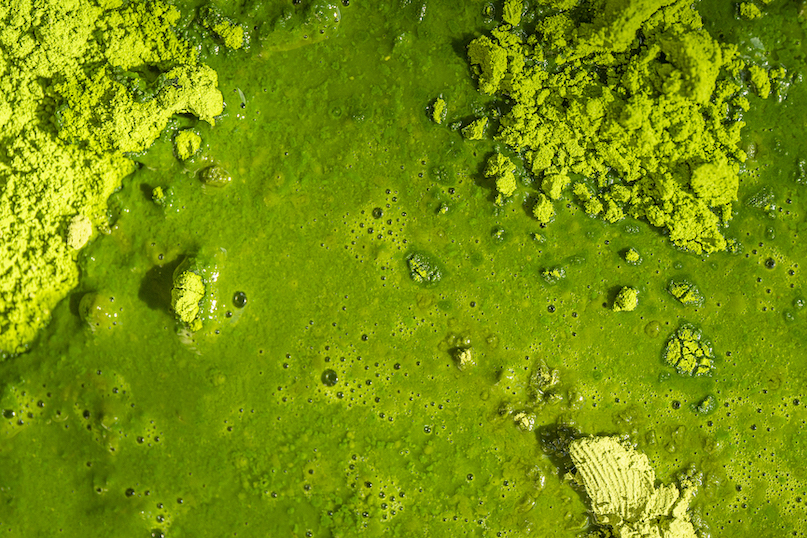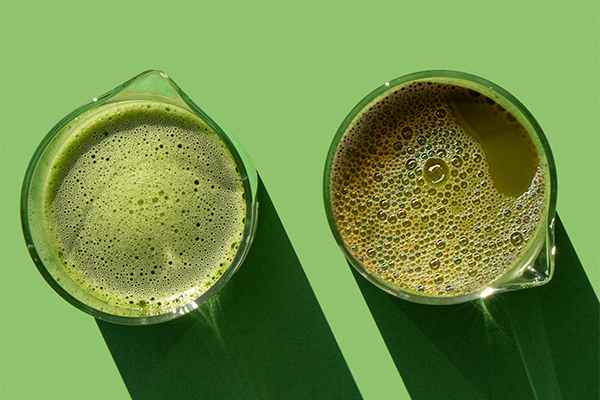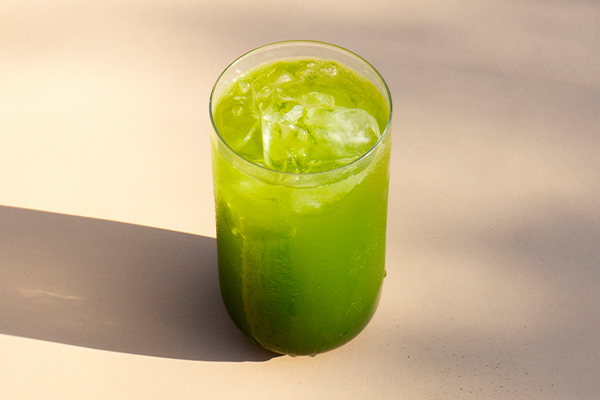10 Proven Health Benefits of Matcha Green Tea
10 Proven Health Benefits of Matcha Green Tea
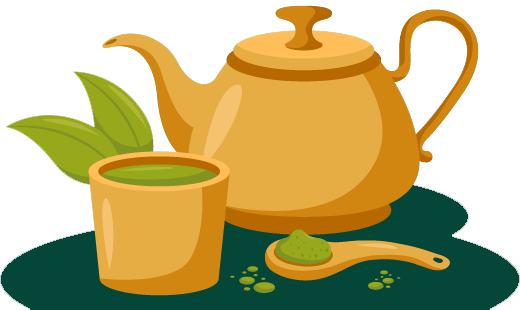
Matcha tea has become a trendy specialty tea in the United States, and for good reason!
Since you’re actually drinking the entire tea leaf, the flavor of matcha green tea is much stronger than your standard steeped cup of green tea. This also means you’re getting more of the amazing health benefits!
Matcha is loaded with health-promoting compounds like catechin antioxidants, l-theanine, and vitamins.
Health benefits of matcha:
- Provides an energy boost, without the jitters and crashes
- Support weight management healthy metabolism
- Supports cardiovascular health
- Promotes calm and supports a healthy stress response
- Is rich in fiber, chlorophyll and vitamins
- Enhances mood and supports focus
- Contains antioxidants like EGCg
- And more!

Provides an energy boost, without the jitters and crashes

Support weight management healthy metabolism

Supports cardiovascular health

Promotes calm and supports a healthy stress response

Is rich in fiber, chlorophyll and vitamins

Enhances mood and supports focus

Contains antioxidants like EGCg

And more!
What Are The Health Benefits Of Matcha?

1. Jitter-free Energy (Without The Crash!)
Have you ever noticed that the caffeine in tea doesn’t give you the same side effects as the caffeine in coffee?
L-theanine is the answer to this mystery!
This unique amino acid acts as the antagonist to caffeine. It helps to calm your nervous system, so you still get the energy boost but with less of the jitters or shakiness that people commonly associate with drinking lots of caffeine (i.e. coffee).(1)
While all green tea contains L-theanine, the levels found in matcha are unmatched. While most green teas have 4 milligrams of L-theanine per serving, a teaspoon of matcha has 20 milligrams! (2)
2. May Support Heart Health
Like other green teas, matcha contains powerful antioxidants called catechins. Drinking green tea catechins has been scientifically shown to support a healthy cardiovascular system. (3) (4) (5)
Matcha is especially high in epigallocatechin gallate (EGCG), which is shown to be helpful in supporting healthy arteries. (6)
Matcha may also help support healthy cholesterol levels and triglyceride levels. (7) (8)


3. May Support Brain Health & Memory
Studies have shown that drinking matcha every day for 3 months can support healthy cognitive functioning. (9)
In another study on healthy adults, those who were given matcha demonstrated better performance in reaction time, memory, and attention when compared with a group given a placebo. (10)
4. May Promote Healthy Weight Management & Metabolism
Green tea has a long proven history of supporting healthy digestion and metabolism. (11) And matcha green tea is no exception!
A study in the American Journal of Clinical Nutrition showed that drinking matcha regularly can result in an increase in the body’s rate of thermogenesis (the rate at which you burn calories) from 8-10% to 35-43%! (12) That same study also showed the possibility of supporting healthy body fat levels by drinking matcha. (13)
In one study, women drank a cup of matcha before a 30-minute brisk walk. Scientists learned that consuming the matcha led to an increase in how much fat was broken down to be used as energy during the walk. (14)

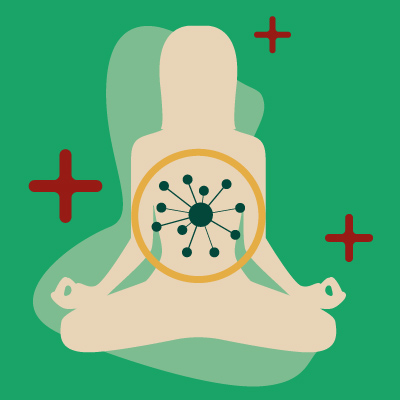
5. May Support A Healthy Stress Response
In one double-blind study, researchers gave participants a drink containing l-theanine or a placebo. Then they measured the participants’ cortisol response after a stress-inducing multitasking test. (15)
Anxiety-prone participants demonstrated a healthier cortisol response after drinking l-theanine (16). This type of improved stress management has also been experienced by people who aren’t typically high-stressed (17).
6. High In Antioxidants
There’s a lot of talk about the benefits of antioxidants. And matcha is an antioxidant powerhouse!
In fact, based on its Oxygen Radical Absorbance Capacity (ORAC) rating—a way of measuring the antioxidant capacity of foods—matcha contains 15 times more antioxidants than blueberries!
Why is this so important? In a nutshell, antioxidants behave like a cleanup crew, helping to rid the body of harmful free radicals. So, increasing the consumption of green tea antioxidants may offer a range of benefits, from supporting your immune system to supporting your body’s natural anti-inflammatory response. (18)
With regard to drinking tea, studies have shown that drinking matcha regularly reduced the damage caused by free radicals and enhanced antioxidant activity. (19)


7. May Support A Positive Mood
Another benefit of matcha’s l-theanine is its effect on neurotransmitters. These are important chemical messsengers that deliver information from different parts of your body to your brain. (20)
Certain neurotransmitters influence how you feel.
For instance serotonin helps regulate positive feelings, dopamine gives off a happy,”rewarding” sensation, and GABA can regulate anxiousness.
L-theanine acts as a relaxing agent and increases all three of these critical neurotransmitters to naturally improve moods (21).
8. May Support Healthy Liver Function And Cell Vitality
From air pollution to preservatives and pesticides in our food supply to toxic dyes in our shampoos and clothes — our bodies are overwhelmed with toxins every day.
One of the best things we can do for our bodies is to consume foods that help our poor, overworked organs clean up our cells. One of the major organs responsible for filtering out these invaders is the liver.
Some studies show that matcha may help protect and support healthy liver function. (22) (23)
One reason for this may be matcha’s high chlorophyll content. Chlorophyll is the chemical responsible for that lovely green color in plants. It has been shown to support cellular cleansing. by helping to remove heavy metals, toxins, and chemicals from the body. (24)
One look at matcha’s vibrant green color and you can tell that this superfood is packed with chlorophyll!


9. May Support Mental Focus
The synergistic effect of matcha’s caffeine and l-theanine is commonly described as “relaxed alertness”. The caffeine helps the brain focus and stay alert while l-theanine helps it relax (25).
This type of energy is ideal if you’re involved in creative work or big picture strategic thinking.
Fun fact: Samurai warriors drank matcha tea before going into battle because it would energize and focus them. And one of matcha’s earliest uses was as an aid to the meditation practice of Japanese monks. Drinking matcha would help them sit alert and calm for hours on end.
Even if you’re not going into battle or meditating, so many of our tasks in life could benefit from calm alertness, right?
10. May Support Healthy Immune Function
Matcha’s antioxidants and amino acids might also help support one of the hardest working systems in your body: your immune system!
According to a study from Brigham and Women’s Hospital, l-theanine may support a healthy immune response to infection (26). And a separate study discovered that l-theanine may support your body’s natural anti-inflammatory response (27).
The EGCg found in matcha may also help promote a healthy inflammation response and protect the body aganist potentially harmful foreign invadors (28).

Not all matcha is created equal. And the same factors that affect the quality of a matcha powder also affect its health-boosting potential.
The highest-quality matcha starts with how it is produced. When selecting your matcha, here are a few things you want to look out for to ensure you’re getting the best, most nutrient-dense matcha powder:

Ceremonial Grade
There are two types of matcha powder: ceremonial grade and culinary grade.
Ceremonial matcha is considered the highest quality matcha on the market. This traditional matcha is bright green in color (meaning it contains high amounts of beneficial chlorophyll) and the texture is very fine.
Culinary matcha powder is much lower quality and meant specifically for use in food, like in baked goods or smoothies.

Organic
If you want to avoid the potentially harmful effects of pesticides and herbicides, then organic teas are your best choice.
Unfortunately, most matcha green tea farms are not organic, so if you’re looking for a high-quality matcha powder that is also good for your health, be sure to look for a USDA organic seal on the packaging.

Shade-Grown/Shaded
The difference between matcha and regular green tea starts with the way the tea leaves are grown.
Authentic, high-quality matcha is made from matcha tea plants that are shaded before they are harvested. This helps to increase the beneficial chlorophyll and amino acid content in the matcha leaves.
It also boosts the premium umami flavor!

Toxin-Screened
A toxin screening process goes one-step beyond organic certification to ensure the highest possible purity.
“Toxin screened” means a third-party has tested the matcha before it is packaged and shipped.
Some toxins commonly found in matcha include heavy metals, fluoride, pesticides, toxic mold, and radioactive isotopes.
Since matcha is powdered green tea leaves, there is no steeping loose tea or messy tea bags required to enjoy its rich umami flavor!
In a traditional Japanese Tea Ceremony, matcha is prepared with a bamboo whisk and a tea bowl, but these aren’t absolutely necessary to enjoy a delicious cup of matcha at home.
Here are 4 simple steps to preparing a perfect cup of matcha:
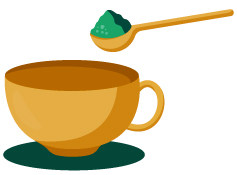
STEP 1 : SIFT IT
The most important first step is to sift the matcha powder into a bowl to prevent clumping.
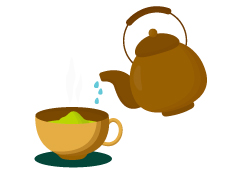
STEP 2 : MEASURE IT
Scoop 1 teaspoon of sifted matcha into your matcha bowl (or mug). Add 70ml of hot water* to the bowl.
*To preserve the health compounds, water temperature should not exceed 170°F.
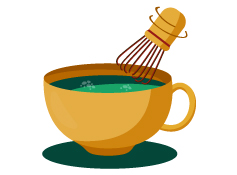
STEP 3 : WHISK IT
Start by slowly running the whisk along the bottom of the bowl to pick up the powder. Then quickly whisk only the upper half of the bowl, never touching the bottom. Move the whisk around the bowl in a “W” motion until you’ve created a nice frothy lather.
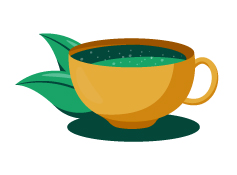
STEP 4 : SIP IT
For the best flavor, you want to enjoy your bowl of matcha within about 3 minutes. Beyond that, the froth will disappear and the matcha powder will start to collect at the bottom of the bowl.

How much matcha should you drink every day?
For most people, drinking one to two cups of matcha every day (using 1/2 to 1 teaspoon of matcha powder per cup) will have a positive impact on energy levels and overall health. If you are sensitive to caffeine, switch to a naturally caffeine-free herbal tea (like peppermint, chamomile, or rooibos) in the afternoon to prevent sleep disruptions.
Possible side effects of matcha
When consumed moderately, matcha doesn’t appear to cause significant side effects. It does contain caffeine which, for some people, may cause headaches, diarrhea, insomnia, or irritability. Pregnant women or individuals who are sensitive to caffeine should use caution. Always consult your doctor for medical advice regarding any concerns about how much matcha tea is safe for you.

Final thoughts

Watch out, turmeric! Matcha green tea is loaded with EGCG catechins, l-theanine, vitamin C (and more!), making it a true superfood beverage.

Matcha powder is made from the same Camellia Sinensis plant as traditional green and black teas but packs a higher concentration of these beneficial plant compounds since you drink the entire leaf in powdered form.

From Japanese tea ceremonies to Buddhist monks, this traditional Japanese green tea has been prized for thousands of years for its unique health and mood-boosting properties.

Equally delicious as a hot cup of tea, a frothy latte, or a cooling iced tea, there are plenty of delicious ways to enjoy this premium tea every day to boost your well-being and feel focused, zen, and energized.
